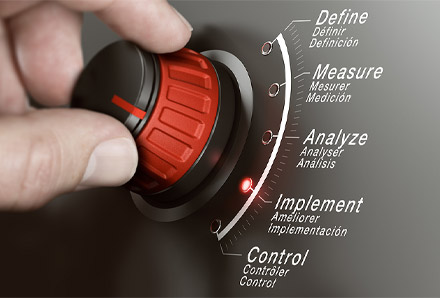The answer is yes – a Lean approach can and does produce results for businesses across all industries. However, there are some common misperceptions that can turn businesses off using this proven approach, so let’s address those first.
- “We’ve done Lean, and it didn’t work for us…”
This sentiment is common in businesses where the implementation missed the mark, the supplier was there to make a quick buck and run, or there was no commitment to continuous improvement. - “It’s only for manufacturing…”
While the approach started as a solution for the manufacturing industry, it is an effective methodology for any business or function. - “It’s not right for our industry…”
This is a widespread misperception. While we often like to think we work in an entirely unique or special industry, there are some common business drivers and challenges that are immutable – they apply to your industry too. You don’t need someone with extensive experience in your industry; you need someone with extensive lean implementation experience who knows what works for any business.
If you have found yourself thinking any of the above, it might be time to take a second look at what Lean can achieve for your business.
It’s a set of principles that work in any environment
The reality is that Lean is a set of principles that can be applied across ANY industry sector, ANY business type, and ANY department or function.
Lean and its core principles did come out of a manufacturing environment, The Toyota Production System. This system is considered the ‘father’ of Lean and transformed this automotive manufacturer into a dominant force in the global automotive market.
But this doesn’t preclude its use in other sectors or business functions – it simply created a foundation and a proof point for the methodology. In fact, Toyota went on to embed the principles into their product design, making them faster to market with very few design changes prior to launch. Moving the learning down the supply chain drove quality back to the source and further shortened the whole supply lead-time.
In my humble opinion, the name ‘Lean Manufacturing’ is a straightforward misnomer – it’s ‘Lean Business,’ and it can work for you.
It’s an excellent solution for the pharmaceuticaland medical device industries
Applying the same principles in pharmaceuticals or medical devices can enhance the chances of beating the competition to launch new drugs and/or devices.
At the time of writing, Explic8 has several Lean engagements with the pharmaceutical and medical device industries, an area we have been working in for more than 20 years. Businesses in these industries started out with some of the misconceptions listed above and have come so far with their use of this methodology, using it to drive results across just about every key indicator.
There is a school of thought that the strict regulatory requirements of cGMP are in direct conflict with Lean goals. However, it is very possible to achieve these goals while still ensuring full compliance. Quality initiatives aimed at embedding right first time at the point of manufacture are complimentary to the goals of Lean. Quality by Design (QbD) is being driven in preference to Quality by Testing (QbT) and is strongly supported by the FDA and other regulatory bodies. It is becoming clearer that focus on quality alone will not reap the rewards of full Lean implementation.
High costs and burdens associated with revalidation of processes after any changes reinforce the need for operational efficiencies, without overly complex SOPs and systems that would negate any productivity gains – hence the need for Lean Business NOT Lean Manufacturing.
But is it cost effective?
Yes. Consider the semiconductor industry that based its foundations around first Lean and then Six-Sigma. It now operates at reject rates of around 0.0001% (6-sigma). Drug recall rates in pharmaceuticals are increasing year-on-year, most of which gets attributed back to manufacturing process defects and currently ranges from 5 to 10% (<2 sigma). That difference to the semiconductor industry equates to around $9 billion per annum… you do the maths.
So, how does it work?
If we think of Lean as a diagram of a house, we start with the foundation. The foundation is all about creating a stable base that forms the bedrock of all that follows. This is about introducing and embedding repeatable, consistent methods, reliable processes and equipment, good workplace organisation and defined work outputs.
The supporting pillars on both sides are about providing the right inputs at the right time at a standard that ensures quality at the source with zero defects passed on.
The end result, the roof, if you like, is the best quality, supplied at the lowest cost, in the shortest lead-time. This concept works for all products and services, and never has it proven more critical than during the COVID-19 pandemic.
When embarking on a Lean implementation, it’s important to note that it is about continuous improvement, not set and forget. That means there is no end – but it also means you are constantly driving better results for your business, so the rewards are worth the effort.
So, can Lean be applied to the pharmaceutical and medical device world? The answer is an emphatic and resounding yes – you just need the right partner to implement it. Explic8 has been working with the pharmaceutical and medical device industries to implement Lean for over 20 years. Get in touch to find out what it could do for you.
- Implementing a Continuous Improvement Program to Drive Operational Excellence - 15 November 2023
- Benefits of a Data Driven Approach to Operational Excellence - 25 June 2023
- Does a Lean approach work for the pharmaceutical and medical device industries? - 2 December 2021


